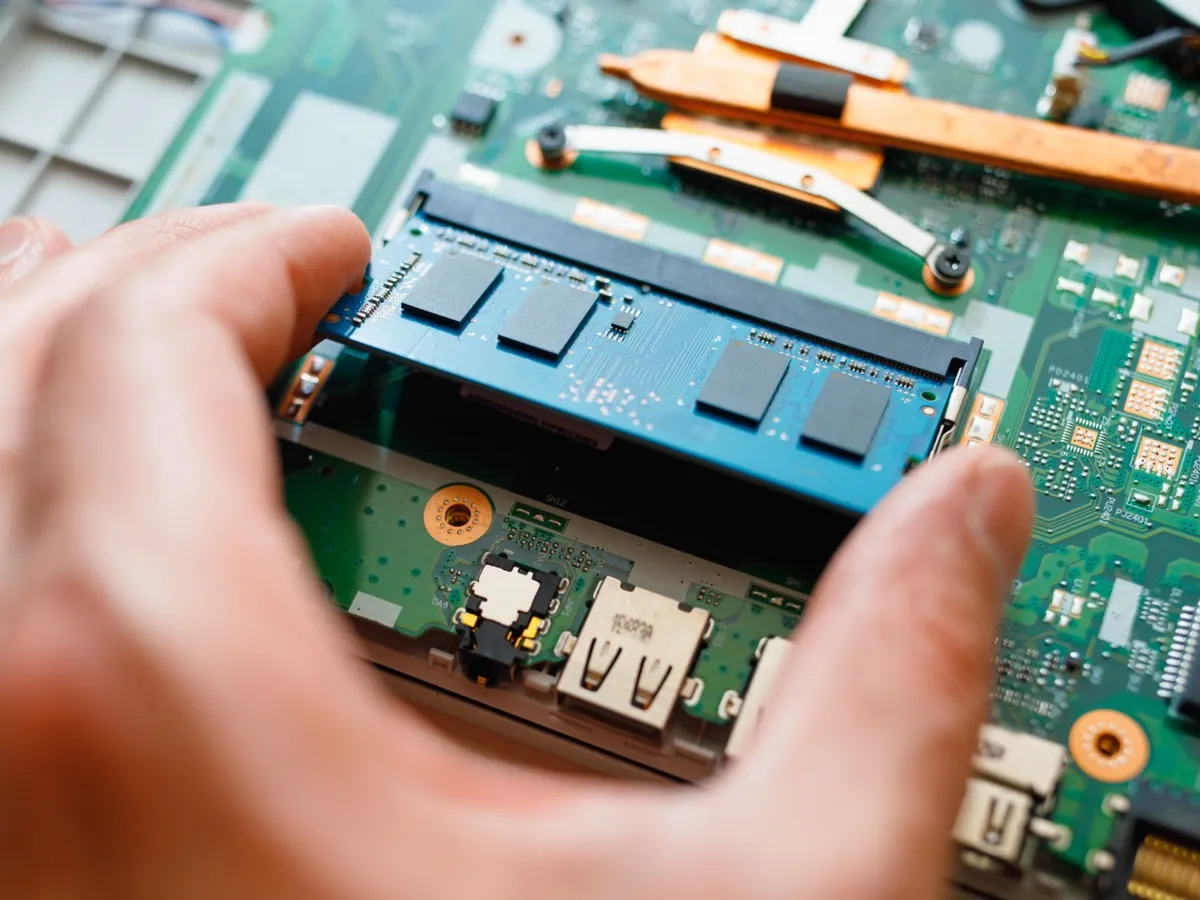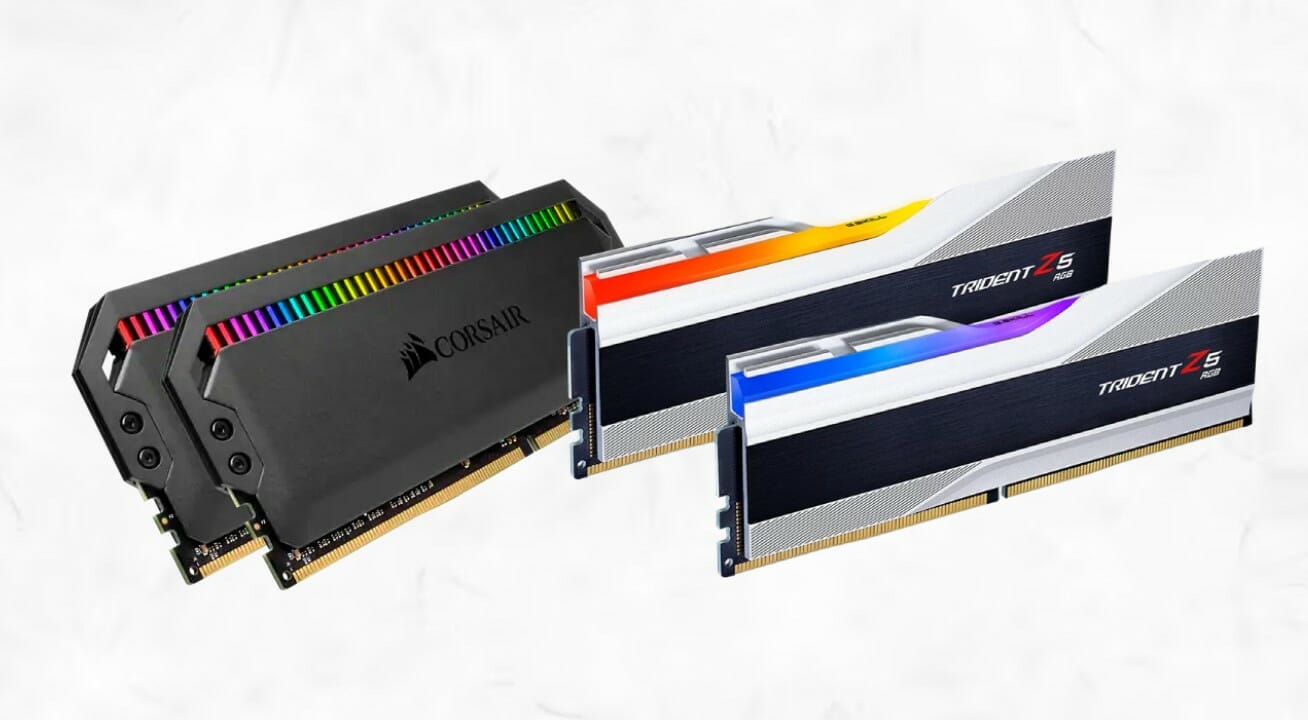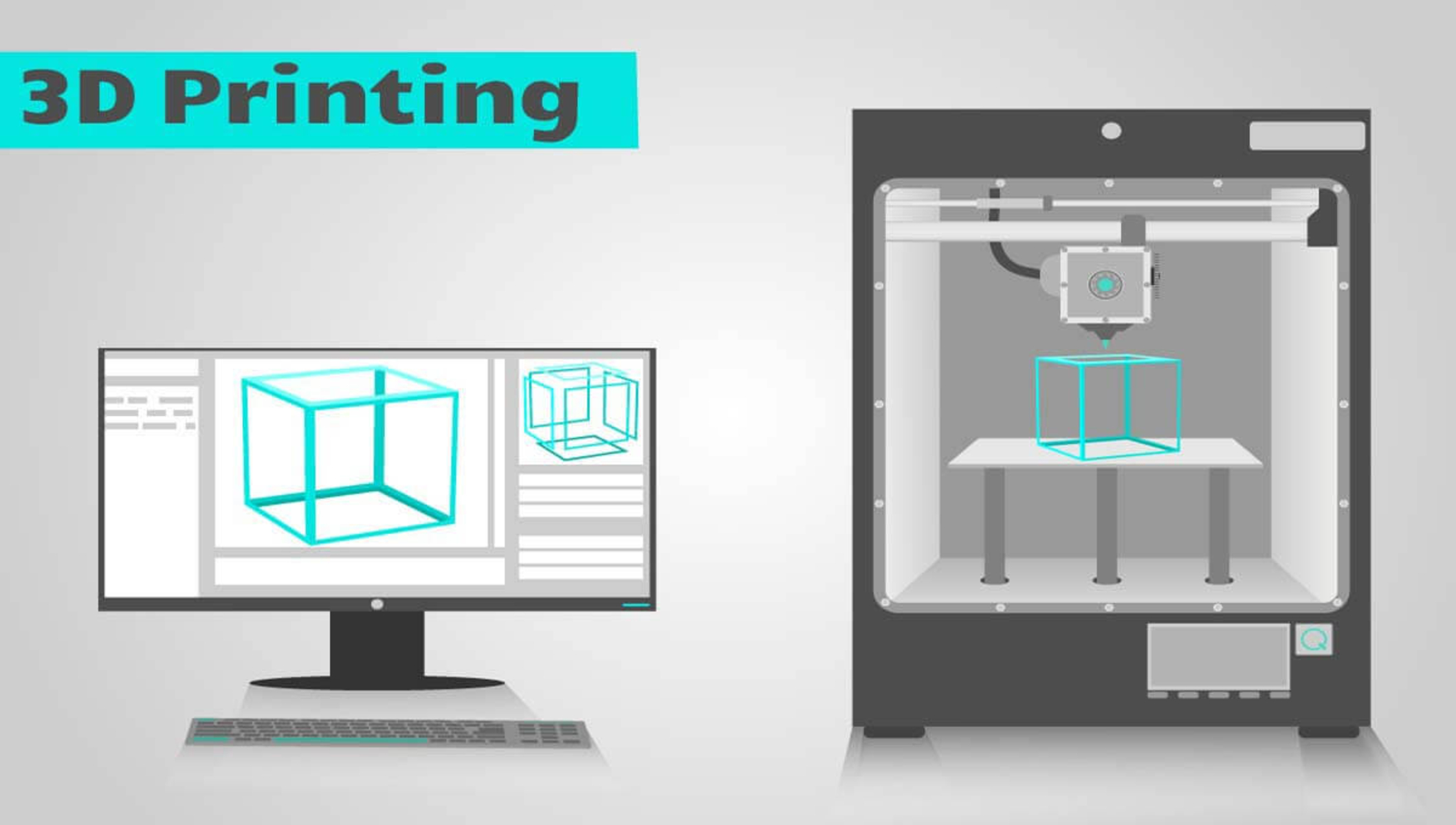Introduction
Welcome to our guide on how much RAM SolidWorks needs! SolidWorks is a popular computer-aided design (CAD) software used by engineers and designers for creating 3D models and simulations. Whether you’re a professional or a student, having a computer setup that meets the software’s requirements is crucial for its smooth functioning.
With its robust capabilities, SolidWorks demands a certain level of hardware performance to ensure optimal user experience. One important factor to consider is the amount of Random Access Memory (RAM) your computer should have to run SolidWorks effectively.
In this article, we will explore the recommended RAM specifications for SolidWorks, how RAM affects its performance, and additional tips for optimizing its functionality. By the end, you’ll have a better understanding of how much RAM you need to ensure a seamless and efficient SolidWorks experience.
So, let’s dive into the details and find out how much RAM is required for SolidWorks!
What is SolidWorks?
SolidWorks is a powerful 3D CAD software developed by Dassault Systèmes. It provides engineers and designers with a comprehensive set of tools and features to create and visualize 3D models for a wide range of industries, including mechanical design, product development, architecture, and more.
One of the key highlights of SolidWorks is its user-friendly interface, making it accessible to both beginners and experienced professionals. The software offers a wide range of features, such as parametric modeling, assembly modeling, simulation, rendering, and drafting, allowing users to design and analyze their projects accurately.
With SolidWorks, users can easily create 3D models by starting from scratch or working on existing designs. The software allows for precise control over dimensions, materials, and geometric relationships, enabling users to simulate real-world conditions and test their designs for functionality and performance.
Not only does SolidWorks offer powerful modeling capabilities, but it also provides a collaborative environment for teams to work together effectively. Multiple users can access and modify the same project simultaneously, making it convenient for collaboration and reducing any potential versioning issues.
Furthermore, SolidWorks integrates seamlessly with other software tools, such as computer-aided engineering (CAE) and computer-aided manufacturing (CAM) applications. This ensures a smooth transition from design to manufacturing, enabling engineers to create prototypes and produce parts more efficiently.
In summary, SolidWorks is a versatile CAD software that empowers professionals in various industries to design, simulate, and visualize 3D models with precision and efficiency. Its user-friendly interface, comprehensive features, and collaborative capabilities have made it a top choice for engineers and designers worldwide.
Minimum System Requirements for SolidWorks
Before diving into the recommended RAM specifications for SolidWorks, it’s essential to understand the minimum system requirements for running the software. SolidWorks is a resource-intensive program, and meeting these requirements is crucial for its stable performance.
Here are the minimum system requirements for running SolidWorks:
- Operating System: Windows 10, 64-bit
- Processor: Intel or AMD with SSE2 support
- RAM: 8 GB or more
- Hard Disk Space: 12 GB or more
- Graphics Card: Certified graphics card and driver
- Display: 1920 x 1080 resolution with True Color
- Network: Microsoft TCP/IP network protocol enabled
Note that these are the minimum requirements, and SolidWorks may still run on a computer that meets these specifications. However, for smooth performance, it is strongly recommended to exceed these minimums, especially when working with larger and more complex assemblies.
Additionally, it’s important to ensure that your graphics card is on the list of certified hardware provided by SolidWorks. Certified cards are tested and optimized by SolidWorks to provide the best performance and stability. Using unsupported graphics cards may result in display issues or limited functionality.
It’s worth mentioning that the minimum RAM requirement of 8 GB is a baseline for running the software. However, if you plan to work on complex designs or simulations, having more RAM will greatly benefit your productivity and overall user experience.
Now that we’ve covered the minimum system requirements, let’s explore the recommended RAM specifications for SolidWorks in the next section.
How Much RAM Does SolidWorks Recommend?
The amount of RAM recommended for SolidWorks depends on various factors, including the complexity of your designs, the size of your assemblies, and the number of simulations you plan to run. SolidWorks provides general guidelines for the recommended RAM based on these considerations.
For small to medium-sized assemblies and designs, SolidWorks recommends a minimum of 16 GB of RAM. This amount of RAM should be sufficient for most users to effectively work on their projects without experiencing significant performance issues.
However, if you work with larger assemblies or complex simulations, it’s highly recommended to have 32 GB or even 64 GB of RAM. This additional RAM allows SolidWorks to handle the increased workload more efficiently, resulting in smoother performance and quicker load times.
Having more RAM is beneficial for multiple reasons. First, it allows SolidWorks to cache more data, reducing the need for constant retrieval from the hard drive. This leads to faster operation and smoother navigation through assemblies and complex designs.
Additionally, more RAM enables you to run multiple applications simultaneously without a significant impact on SolidWorks performance. This is particularly useful when you need to refer to other software tools or documents while working on your SolidWorks projects.
It’s important to note that while having more RAM can improve SolidWorks performance, it’s not the only factor to consider. Other components, such as the processor and graphics card, also play a crucial role in the overall performance of the software.
In summary, SolidWorks recommends a minimum of 16 GB of RAM for small to medium-sized assemblies, but for larger assemblies and complex simulations, it’s advisable to have 32 GB or even 64 GB of RAM. The amount of RAM you should allocate for SolidWorks depends on your specific requirements and the scale of your projects.
How Does RAM Affect SolidWorks Performance?
RAM, or Random Access Memory, plays a crucial role in determining the performance of SolidWorks. It directly affects the software’s ability to handle and manipulate complex 3D models, assemblies, and simulations. Let’s delve into how RAM influences SolidWorks performance.
When you work on a project in SolidWorks, the software loads various data into the RAM for quick access. This includes the 3D model, assembly components, textures, rendering information, and more. The more RAM available, the more data SolidWorks can cache, reducing the need to read and write from the slower hard drive frequently.
Having sufficient RAM allows SolidWorks to maintain a large cache of data, resulting in smoother and faster performance. With more data stored in RAM, the software can quickly retrieve the necessary information and display it on the screen, ensuring a responsive user interface.
RAM also plays a critical role in handling complex designs and assemblies. When working with intricate models or large assemblies, SolidWorks needs to process a vast amount of data to render the viewports and perform calculations effectively. In such cases, having ample RAM is essential to avoid lag, freezing, or crashes during operation.
Additionally, RAM affects the efficiency of running simulations in SolidWorks. When conducting simulations, the software needs to store and process significant amounts of data. Insufficient RAM may limit the complexity or scale of simulations, resulting in inaccurate results or failure to complete the analysis.
Another advantage of having more RAM is multitasking. With additional memory, you can run SolidWorks alongside other applications without a significant impact on performance. This allows you to refer to documentation, browse the internet, or utilize other software tools while working on your SolidWorks projects, enhancing your productivity.
Ultimately, the amount of RAM you have directly affects the performance and user experience in SolidWorks. Insufficient RAM can result in slower loading times, sluggish response, and limitations in working on complex models and simulations. On the other hand, having more RAM provides the necessary resources for smooth operation, faster access to data, and improved overall performance.
Factors to Consider when Choosing RAM for SolidWorks
When deciding on the amount of RAM for SolidWorks, several factors need to be taken into consideration. These factors will help ensure that your computer setup meets the requirements for optimal performance. Let’s explore the key factors to consider when choosing RAM for SolidWorks.
1. Assembly Complexity: The complexity of your SolidWorks assemblies will directly impact the amount of RAM you need. If you are working with larger assemblies or highly detailed models, allocating more RAM is crucial to accommodate the increased data.
2. Simulation Requirements: If you plan to run simulations in SolidWorks, such as stress analysis or motion studies, it’s important to allocate enough RAM. The memory requirements for simulations can be significant, especially for complex models or large-scale simulations.
3. Future Expandability: Consider your future needs when choosing RAM for SolidWorks. Allocating more RAM than the minimum requirement can offer room for growth and handle future projects that might entail larger assemblies or more demanding simulations.
4. Multi-Tasking: If you tend to run multiple applications simultaneously while using SolidWorks, such as rendering software or other resource-intensive programs, you’ll want to allocate extra RAM to ensure a smooth multitasking experience and avoid performance issues.
5. Budget: RAM prices can vary, and it’s essential to consider your budget when choosing RAM for SolidWorks. While it’s important to have an adequate amount of RAM, ensure that it fits within your financial constraints.
6. System Configuration: Make sure your computer is capable of accommodating the amount of RAM you choose. Check the maximum RAM capacity supported by your motherboard and the number of available RAM slots. This will help determine if an upgrade is required.
7. Graphics Card: While RAM is crucial for SolidWorks, so is the graphics card. SolidWorks heavily relies on the GPU for rendering and viewport performance. Allocating enough VRAM on your graphics card is also vital for smooth operation.
Remember, it’s not just about the amount of RAM, but also about the overall hardware configuration. A well-balanced system, including a powerful processor and a certified graphics card, will enhance the performance of SolidWorks alongside the allocated RAM.
By considering these factors and matching your RAM allocation to the requirements of your SolidWorks projects, you can ensure an optimal user experience and maximize your productivity within the software.
Additional Tips for Optimizing SolidWorks Performance
Aside from allocating sufficient RAM, there are several additional tips and best practices that can help optimize the performance of SolidWorks. By implementing these techniques, you can enhance your workflow and ensure a smoother experience while using the software. Let’s explore some of these tips below:
1. Install SolidWorks on a Solid-State Drive (SSD): Using an SSD for your SolidWorks installation can significantly improve load times and file access speeds. SSDs offer faster data retrieval compared to traditional hard drives, resulting in a more responsive user interface.
2. Regularly Update Graphics Drivers: Keeping your graphics drivers up to date is crucial for optimal performance in SolidWorks. Graphics driver updates often include performance optimizations and bug fixes, ensuring smooth operation and compatibility with the latest software versions.
3. Optimize System Settings: Adjusting the system settings within SolidWorks can have a noticeable impact on performance. You can fine-tune settings such as the level of detail shown, the number of undo levels, and the graphics performance mode to match your requirements and hardware capabilities.
4. Utilize the Large Assembly Mode: If you regularly work with large assemblies, enabling the Large Assembly Mode in SolidWorks can help improve performance. This mode allows you to suppress or reduce the level of detail for components that are not currently being worked on, reducing resource consumption.
5. Manage File References: Keeping your file references organized and up to date is essential for efficient SolidWorks performance. Broken or outdated references can slow down the software, so periodically review and fix any broken links to external files.
6. Simplify Complex Models when Possible: If you encounter performance issues with highly complex models, consider simplifying them by suppressing unnecessary features or components. Removing unnecessary details can reduce the computational load on SolidWorks and improve performance.
7. Use Display States and Configurations: Display States and Configurations allow you to show different levels of detail and configurations within your assembly. By using these features, you can minimize the amount of data that SolidWorks needs to process, resulting in smoother performance.
8. Close Other Resource-Intensive Applications: If you experience performance issues with SolidWorks, check for other resource-intensive applications running concurrently. Closing these applications can free up system resources and improve SolidWorks performance.
9. Regularly Update SolidWorks: Keeping SolidWorks up to date with the latest software updates and service packs is important for both performance improvements and bug fixes. These updates often address known issues and provide enhancements to the software’s functionality.
10. Invest in High-Quality Hardware: While SolidWorks performance can be optimized with software settings and configurations, having a well-equipped hardware setup is crucial. Invest in a fast processor, a certified graphics card, and sufficient RAM to ensure a smooth and efficient experience.
By following these additional tips and optimizing your SolidWorks configuration, you can maximize your productivity and mitigate potential performance issues, ensuring a seamless and efficient workflow.
Conclusion
In conclusion, choosing the right amount of RAM for SolidWorks is crucial for ensuring optimal performance and a seamless user experience. While the minimum system requirements specify 8 GB of RAM, it is highly recommended to allocate more RAM to meet the demands of complex designs, larger assemblies, and simulations.
For small to medium-sized assemblies, a minimum of 16 GB of RAM is suggested, but for those working with more intricate designs or large-scale simulations, 32 GB or even 64 GB is recommended. Having more RAM allows SolidWorks to cache and access data more efficiently, resulting in faster load times, smoother operation, and improved multitasking capabilities.
It’s important to consider various factors when selecting RAM for SolidWorks, including assembly complexity, simulation requirements, future expandability, budget, system configuration, and the graphics card. A well-balanced hardware setup, including a powerful processor and a certified graphics card, complements the allocated RAM and contributes to the overall performance of SolidWorks.
Additionally, implementing optimization techniques such as installing SolidWorks on an SSD, regularly updating graphics drivers, optimizing system settings, managing file references, simplifying complex models, and utilizing display states and configurations can further enhance SolidWorks performance.
By carefully considering these factors and applying these tips, you can ensure that your SolidWorks experience is efficient, productive, and enjoyable. Remember to regularly update SolidWorks and periodically review your hardware setup to keep up with the software’s evolving demands.
Your choice of RAM allocation should align with your specific requirements, considering the complexity of your projects and your budget. Striking the right balance will enable you to unleash the full potential of SolidWorks and unlock your creativity in the world of 3D design and engineering.

























